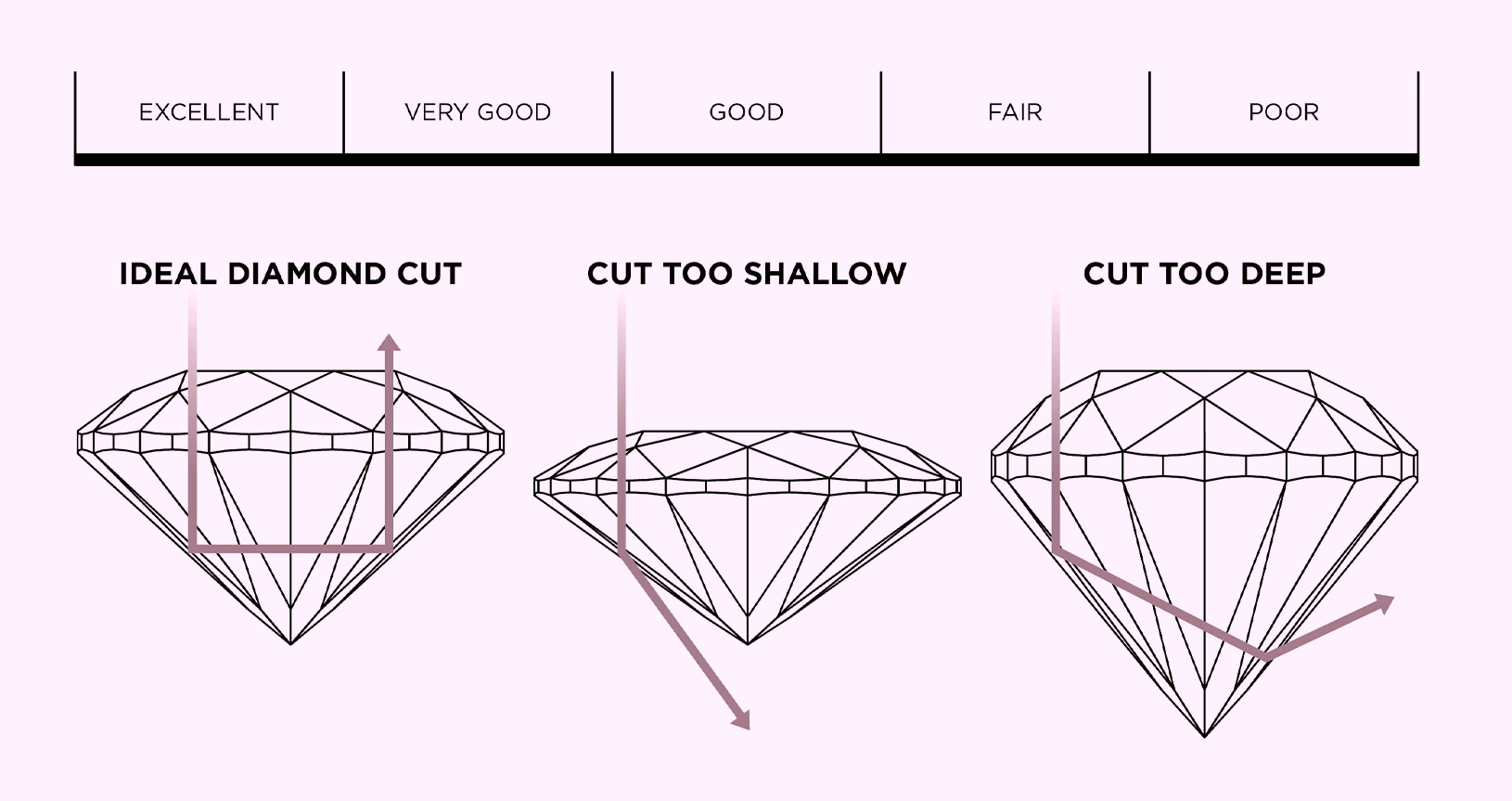When it comes to selecting a diamond, one of the most critical factors to consider is the cut grade. The cut of a diamond significantly affects its brilliance, sparkle, and overall appearance. In this article, we’ll delve into diamond cut grades, what they mean, and why they matter when choosing the perfect stone.
Table of Contents
What is Diamond Cut?
The term “diamond cut” refers to how well a diamond has been shaped and faceted. Unlike other factors like carat weight, color, and clarity, the cut of a diamond is the only one influenced by human craftsmanship. A well-cut diamond reflects light beautifully, creating the sparkle that makes diamonds so captivating.
The Importance of Cut Grades
Cut grades are essential for determining a diamond’s quality and visual appeal. A diamond with a superior cut will exhibit greater brilliance and fire, while a poorly cut diamond may appear dull, regardless of its carat weight or color. Understanding cut grades helps buyers choose a diamond that maximizes beauty and value.
Cut Grade Scale
Diamond cut grades are typically assessed using a standardized scale. The Gemological Institute of America (GIA) is one of the most recognized authorities on diamond grading and uses the following scale:
Excellent
Diamonds with an Excellent cut grade reflect the maximum amount of light, resulting in exceptional brilliance and sparkle. These diamonds are expertly crafted and display optimal proportions and symmetry.
Very Good
Very Good cut diamonds also exhibit impressive brilliance, though they may not reflect light as perfectly as those graded Excellent. These man made diamonds are still a great choice and often offer better value for the price.
Good
Good cut diamonds show decent brilliance, but some light may escape due to less-than-ideal proportions. While these diamonds can be beautiful, they won’t sparkle as brightly as higher-graded stones.
Fair
Fair cut diamonds have noticeable performance issues in terms of light reflection. While they may still be visually appealing, they are generally considered lower quality compared to the higher grades.
Poor
Diamonds with a Poor cut grade have significant flaws in their proportions and symmetry. As a result, they lack brilliance and can appear dull. It’s advisable to avoid these diamonds if you prioritize sparkle and beauty.
Factors Affecting Cut Quality
Several factors contribute to a diamond’s cut grade:
Proportions
The proportions of a diamond refer to its dimensions, including the table size, depth, and crown angle. Ideal proportions help maximize light return and overall brilliance.
Symmetry
Symmetry refers to how well the facets of the diamond align with each other. Excellent symmetry contributes to a diamond’s overall appearance and sparkle.
Polish
Polish refers to the smoothness of a diamond’s surface after cutting. A well-polished diamond will reflect light more effectively, enhancing its overall brilliance.
Choosing the Right Cut Grade
When selecting a diamond, it’s essential to consider your preferences and budget. While Excellent and Very Good cut diamonds offer the most brilliance, they can also come at a higher price point. If you’re looking for a balance between beauty and affordability, a Good cut diamond may be a practical choice, especially if it has desirable color and clarity grades.
Conclusion
Understanding diamond cut grades is crucial for making an informed purchasing decision. The cut significantly impacts a diamond’s brilliance, sparkle, and overall aesthetic appeal. By familiarizing yourself with the different cut grades and what they signify, you can choose a diamond that meets your expectations for beauty and value. Whether you opt for an Excellent cut or a more budget-friendly option, knowing the ins and outs of diamond cut grades will help you find the perfect stone.

